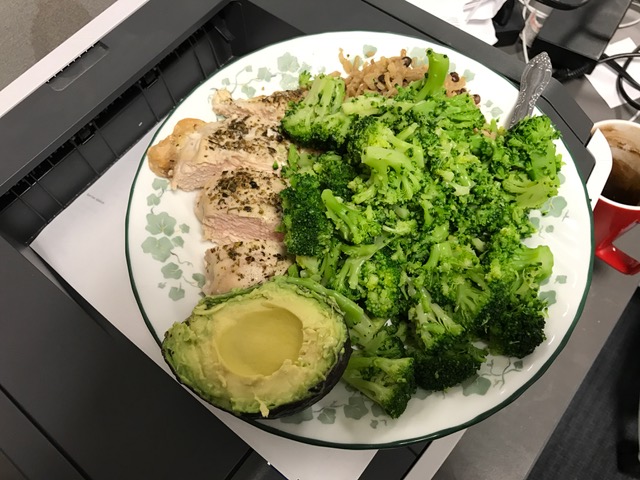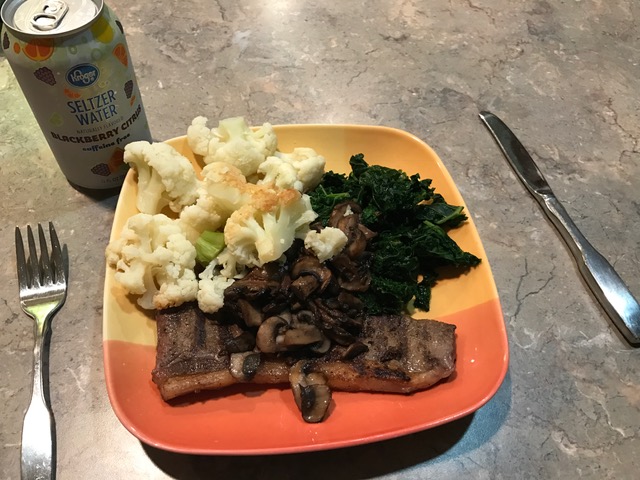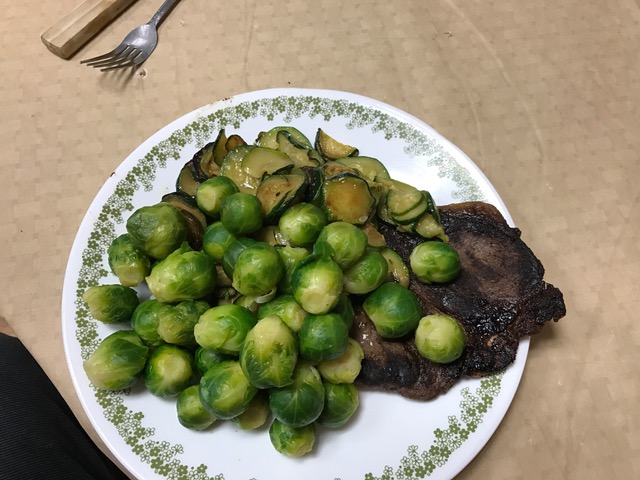Intro
Pictured above is a one month before-and-after comparison of yours truly. Over the course of those four weeks, I was able to drop 14 lbs of measured body fat, and still maintain my maximal strength in the deadlift, back squat and bench press (I also discovered a much more flattering angle of my locker room’s lightning).
The bit that makes this program somewhat unique is that every exercise I did–with the exception of limited heavy squats, deadlifts and bench press sets–was performed as a complex. This included all accessory lifts and mobility work, as well as “cardio”.
While I admit that this “complexes only” rule is somewhat of a gimmick to promote my exercise complex table, the results are pretty stout.
I won’t go into the details of my love affair with complexes (I do so exhaustively in this article), but I’ll briefly hit on the highlights.
For one, complexes’ main claim to fame is their potent fat burning ability; we can give that one a thumbs up.
Secondly, if you’ve ever gone through a traditional “cutting phase”, you know how difficult it is to not only preserve lean mass, but keep your strength up as well. From my measurements, I didn’t seem to lose any muscle, and my strength levels stayed the same; in fact, my squat went up 10 lbs!
Lastly, the sheer bulk of variety made this program very exciting. The fact that I wanted die on multiple occasions prevents me from saying I had “fun”, but I can proudly proclaim that boredom was never an issue.
I’ll get to the details of the program in a moment, but I should briefly address why I chose to begin each of my three strength training workouts with a heavy five-rep top set. As magical as complexes are, I don’t believe there’s a substitute for low-rep, high tension compound exercises, especially considering my goal to maintain absolute strength.
Nutrition

An example of a training day meal: chicken breast baked in olive oil, avacado, brown rice and lentils, and broccoli
As much as I’d like to give the program all the credit, I’d be a scoundrel if I didn’t chalk up a good portion of my success to diet. Advanced fitness nutrition is outside the scope of this article, as well as my brain, so I’ll just stick to the skinny (sweet pun, bro).
Years of dabbling in diet has shown me that my body composition responds favorably to restricted carbohydrates (this is quite common). Thus, I decided to employ the restricted carb strategy during this program.
How restricted? Not very, relative to the amount of carbs I typically consume anyway. On days when I’m not eating like a total a-hole, I typically consume ~3300 calories. On average, 50% of said calories are from carbs. This puts me right around 400 grams of carbohydrates every day.
Carbohydrates:
Over the course of the month, I cut my daily calories back just a hair to an average of 3000 (still want to have enough in the tank for all the intense activity), and broke my carb intake down as follows:
On my three heavy lifting days, I consumed ~220 g of carbs; a sizeable portion came post-exercise, usually consisting of quinoa, brown rice or sweet potatoes.
On my “off days”, I only consumed carbs from non-starchy vegetables and nuts. You might be surprised how many carbohydrates are in a bag of steamed brussel sprouts! These days averaged ~120 g.
Protein:
I tried to stick to as much whole food protein as possible. One reason was to maximize the thermogenic effect; up to 15% of your steak’s calories are burned simply by digesting it. The primary reason, however, was more practical. For satiety’s sake, I needed all the food I could get in my belly to combat the absence of carbs. All told, I averaged 240 g of protein daily.
Fat:
With regard to fat, I didn’t really give it much thought. I ate it mainly from quality sources like red meat, fish, avocados, nuts, coconut oil and breast milk (that last one was just to wake you up…and it’s fun to type “breast”).
I consumed very limited alcohol, and my cheat meals were modest and infrequent (once a week).
The Program Principles
I break down what I did in the section below, but the rules to creating your own adaptation are pretty simple. It looks like this:
Day 1: Lower Body
- Low intensity mobility complex (e.g., Limber 11, Tactical Frog)
- Low intensity lower body or full body complex: very low weight for warm-up
- Squat variation (e.g., back squat, front squat, Zercher squat): 1 x 5 / 85-90% 1RM (should include warm-up sets)
- Lower body complex: 2-3 x 2-5 reps per exercise / start lighter with 4-5 reps and go lower volume with heavier weight during subsequent sets
- Lower body complex: 2-3 x 6-10 reps per exercise
- Lower body complex: Choose a complex that focuses on an area you’d like to improve (e.g., glutes, calves). I chose the muscles around my knees, namely the vastus medialis.
Tactical Frog
Ben Bruno’s Trap Bar Complex
Day 2: “Cardio”
- Low intensity mobility complex (e.g., Limber 11, Tactical Frog)
- Low intensity full body complex: very low weight for warm-up
- 3-5 rounds of a high-intensity complex with high reps per exercise (e.g. Defranco’s Bodyweight Complex, Tumminello’s Plate Complex)
Defranco’s Limber 11
Tumminello’s Weight Plate Complex
Day 3: Upper Body
- Low intensity mobility complex (e.g., Defranco’s Upper Body Warm-up)
- Low intensity upper body complex: very low weight for warm-up (e.g., Resistance Band Upper Body Warm-up)
- Press variation (e.g., flat bench, incline bench, military press): 1 x 5 / 85-90% 1RM (should include warm-up sets)
- Upper body press-dominant complex: 3-4 x 6-10 reps per exercise
- Upper body pull-dominant complex: 3-4 x 6-10 reps per exercise
- Upper body complex: 1 round. Choose a complex that focuses on an area you’d like to improve (e.g., pecs, grip). I chose the biceps, as a good little meathead should.
- Upper-body finisher complex (optional)
Lee Boyce’s Back Complex
Day 4: “Cardio”
- Low intensity mobility complex (e.g., Limber 11, Tactical Frog)
- Low intensity full body complex: very low weight for warm-up
- 3-5 rounds of a high-intensity complex with high reps per exercise (e.g. Defranco’s Bodyweight Complex, Tumminello’s Plate Complex)
Defranco’s Bodyweight Complex
Day 5: Total Body
- Low intensity mobility complex (e.g., Limber 11, Flexible Steel, Turkish Getup Mobility Complex)
- Low intensity total body complex: very low weight for warm-up
- Deadlift variation (e.g., conventional deadlifts, sumo, trap bar, rack pulls): 1 x 5 / 85-90% 1RM (should include warm-up sets)
- Total body complex: 2-3 x 2-5 reps per exercise / start lighter with 4-5 reps and go lower volume with heavier weight during subsequent sets
- Total body complex: 2-3 x 6-10 reps per exercise
- Core-centric or carry complex: 2-3 rounds
Dan John’s Mass Made Simple Barbell Complex
Off days:
Low-intensity mobility work, leisurely walks, or total rest.
Visit the link below to sign up for a free 92 page issue of MASS Research Review (you can read my MASS review here) covering the following topics:
- Blood Flow Restriction Training Causes Type I Fiber Hypertrophy in Powerlifters
- Leave the Gym with a Little Left in the Tank
- Energy Availability in Strength and Power Athletes
- Hormonal Contraceptives Don’t Mitigate Strength Gains
- Power Training or Speed Work for Some, But Not All?
- The Role of Physical Activity in Appetite and Weight Control
- The Science of Muscle Memory
- VIDEO: Program Troubleshooting
- VIDEO Sustainable Motivation for Sport and Fitness



